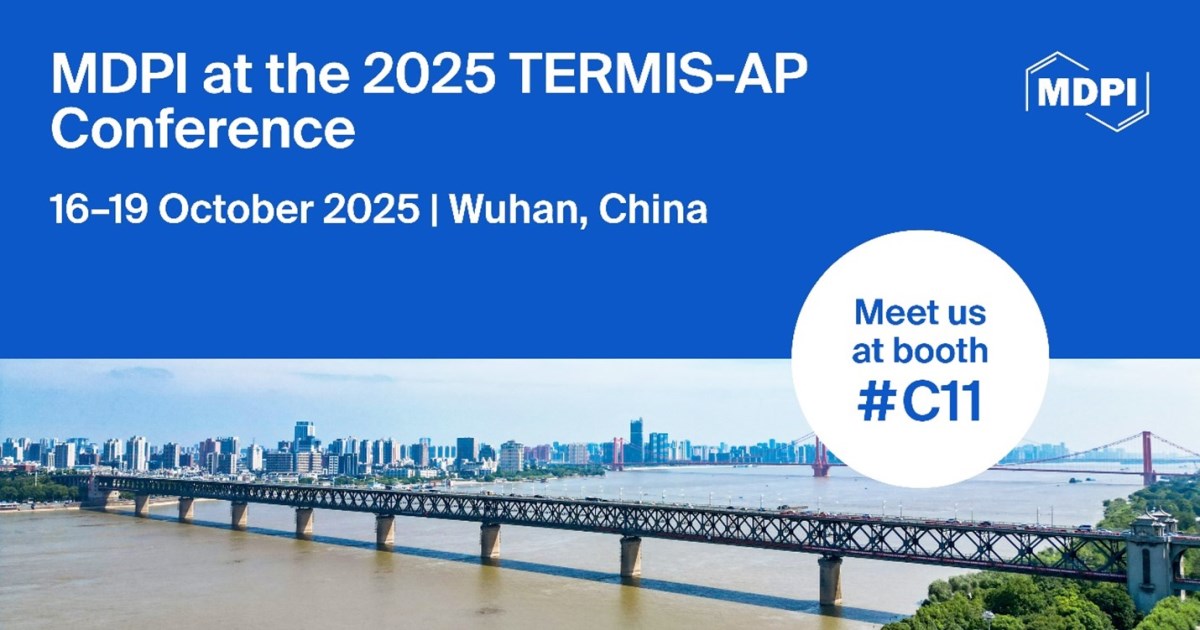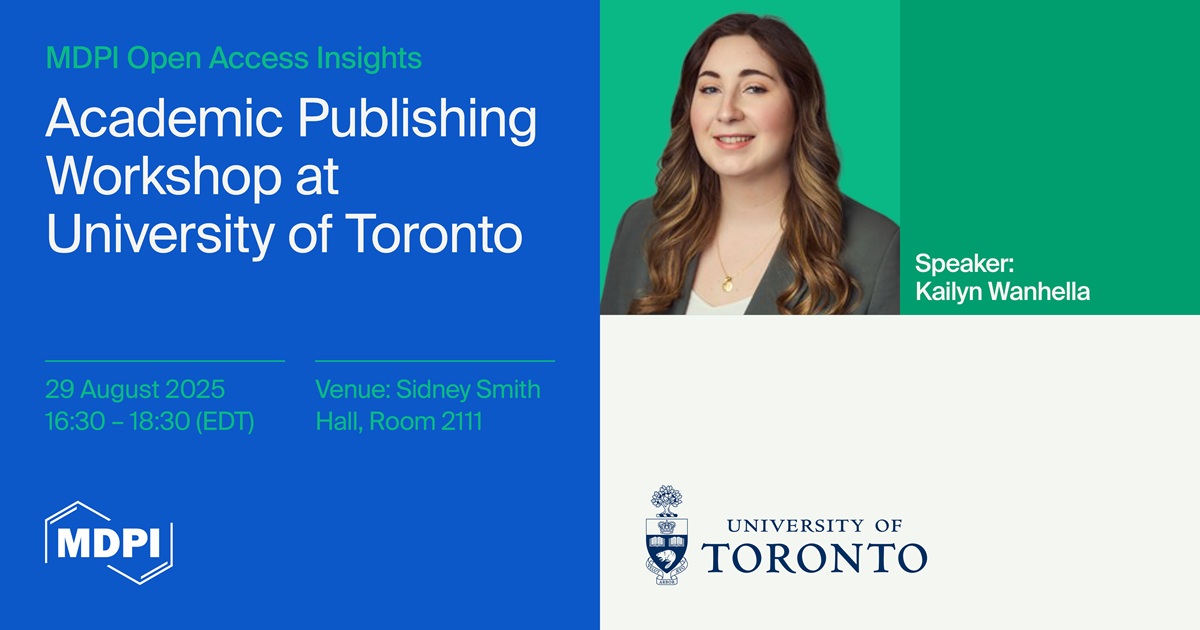Topical Advisory Panel applications are now closed. Please contact the Editorial Office with any queries.
Journal Description
Biomimetics
Biomimetics
is an international, peer-reviewed, open access journal on biomimicry and bionics, published monthly online by MDPI. The International Society of Bionic Engineering (ISBE) is affiliated with Biomimetics.
- Open Access— free for readers, with article processing charges (APC) paid by authors or their institutions.
- High Visibility: indexed within Scopus, SCIE (Web of Science), PubMed, PMC, Ei Compendex, CAPlus / SciFinder, and other databases.
- Journal Rank: JCR - Q1 (Engineering, Multidisciplinary) / CiteScore - Q2 (Biomedical Engineering)
- Rapid Publication: manuscripts are peer-reviewed and a first decision is provided to authors approximately 17.1 days after submission; acceptance to publication is undertaken in 2.8 days (median values for papers published in this journal in the first half of 2025).
- Recognition of Reviewers: reviewers who provide timely, thorough peer-review reports receive vouchers entitling them to a discount on the APC of their next publication in any MDPI journal, in appreciation of the work done.
Impact Factor:
3.9 (2024);
5-Year Impact Factor:
4.0 (2024)
Latest Articles
Multifunctional Liquid Metal for Biomimicry Application
Biomimetics 2025, 10(9), 574; https://doi.org/10.3390/biomimetics10090574 - 29 Aug 2025
Abstract
Liquid metal (LM), which possesses unique material properties such as excellent flexibility, high thermal and electrical conductivities, and biocompatibility, has demonstrated broad application potential in the fields of intelligent manufacturing, flexible electronics, and biomedical engineering. This paper presents a systematic review of recent
[...] Read more.
Liquid metal (LM), which possesses unique material properties such as excellent flexibility, high thermal and electrical conductivities, and biocompatibility, has demonstrated broad application potential in the fields of intelligent manufacturing, flexible electronics, and biomedical engineering. This paper presents a systematic review of recent advances in multifunctional LM materials for biomimetic applications, with a focus on 3D printing, catalysis, sensing, and biomedical technologies. Through advanced 3D printing techniques—including direct writing, embedded printing, and extrusion/infiltration—LM has been effectively utilized in the fabrication of high-precision electronic components. In catalysis, LM-based catalysts exhibit superior performance in energy conversion and environmental remediation due to their high catalytic activity and selectivity. Moreover, LM has made notable progress in the development of high-performance sensors and biomedical devices, contributing significantly to the advancement of health monitoring and intelligent diagnostic and therapeutic technologies. This review aims to provide theoretical insights and technical references for further research and engineering applications of liquid metals.
Full article
(This article belongs to the Special Issue Liquid Metal Biomimicry: Toward Bio-Inspired Smart Materials)
►
Show Figures
Open AccessArticle
Living Textures and Mycelium Skin Co-Creation: Designing Colour, Pattern, and Performance for Bio-Aesthetic Expression in Mycelium-Bound Composites
by
Anastasia Globa, Eugene Soh and Hortense Le Ferrand
Biomimetics 2025, 10(9), 573; https://doi.org/10.3390/biomimetics10090573 - 29 Aug 2025
Abstract
Natural materials present sustainable opportunities in architectural design, but often lack the aesthetic controllability associated with synthetic alternatives. This research explores the bio-aesthetic potential of mycelium-bound composites (MBCs) cultivated from Ganoderma Steyaertanum (Reishi mushroom), focusing on how external stimuli and surface
[...] Read more.
Natural materials present sustainable opportunities in architectural design, but often lack the aesthetic controllability associated with synthetic alternatives. This research explores the bio-aesthetic potential of mycelium-bound composites (MBCs) cultivated from Ganoderma Steyaertanum (Reishi mushroom), focusing on how external stimuli and surface treatments influence material expression. This investigation was carried out through interdisciplinary collaboration involving design, architecture, and material science. Two post-demolding surface treatment strategies were applied to MBC samples: ‘Delayed Growth‘ and ‘Accelerated Growth‘. These treatments were designed to assess the mycelium’s responsiveness in terms of colour and texture development. A controlled set of samples was analysed using scanning electron microscopy, Fourier-transform infrared spectroscopy, and hydrophobicity testing to evaluate changes in microstructure, chemical composition, and surface properties. The results demonstrate that mycelium exhibits a measurable capacity for aesthetic adaptation, with distinct variations in pigmentation and texture emerging under different treatment conditions. These findings highlight the potential for co-creative design processes with living materials and offer new insights into the integration of biological responsiveness in design practices. The study contributes to the advancement of sustainable material systems and expands the possibilities for bio-design through controlled interaction with bio-materials.
Full article
(This article belongs to the Section Biomimetics of Materials and Structures)
►▼
Show Figures
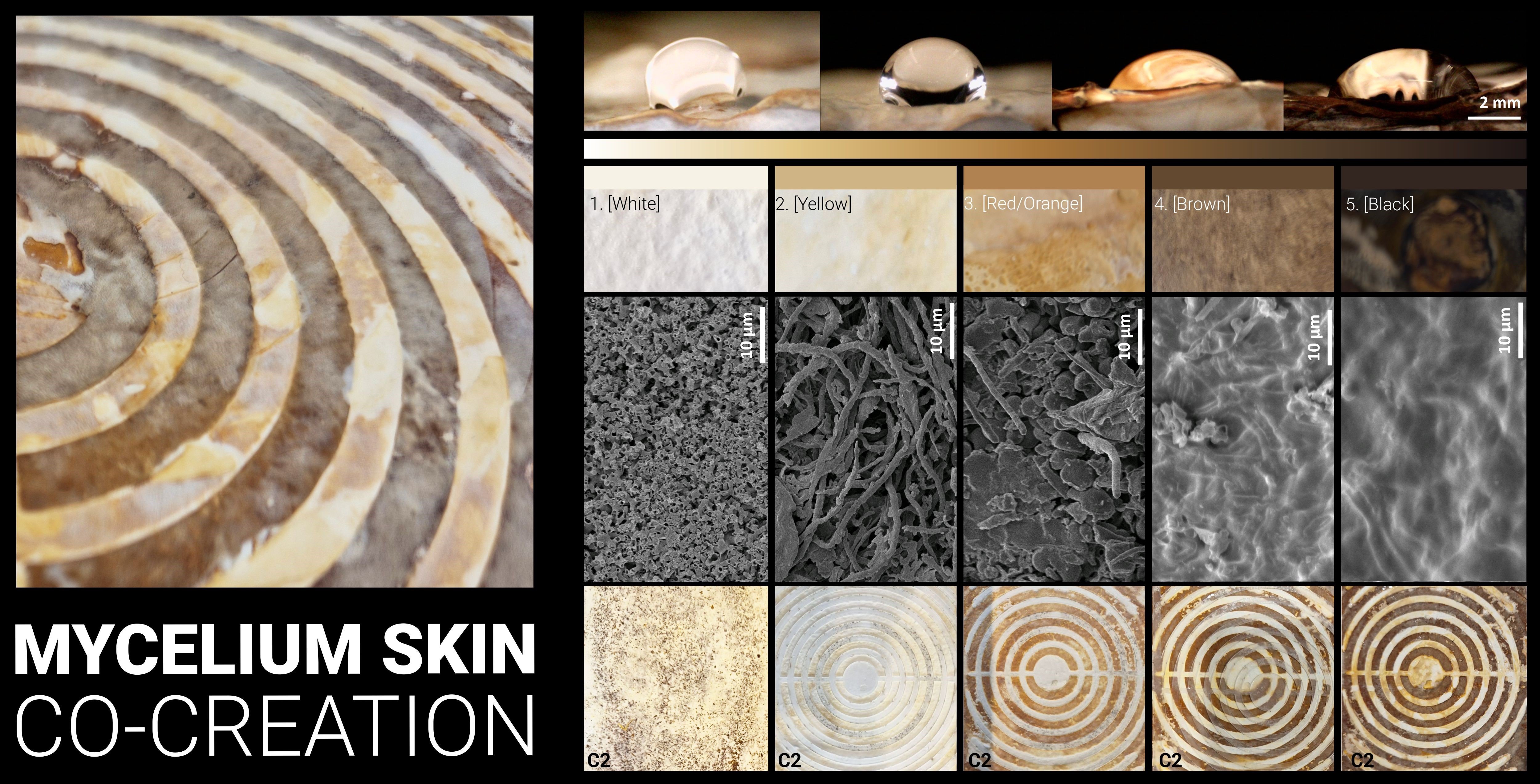
Graphical abstract
Open AccessArticle
An Improved Bionic Artificial Lemming Algorithm for Global Optimization and Cloud Task-Scheduling Problems
by
Yuyong Tan, Jianfeng Wang and Bin Wang
Biomimetics 2025, 10(9), 572; https://doi.org/10.3390/biomimetics10090572 - 28 Aug 2025
Abstract
The intelligent optimization algorithm has become a key tool in complex and intertwined engineering and science fields. However, with the increasing complexity of the problem and the rapid expansion of the data scale, the performance of the algorithm has been challenged unprecedentedly. The
[...] Read more.
The intelligent optimization algorithm has become a key tool in complex and intertwined engineering and science fields. However, with the increasing complexity of the problem and the rapid expansion of the data scale, the performance of the algorithm has been challenged unprecedentedly. The artificial lemming algorithm has gradually emerged because of its unique structural design and efficient optimization performance and has been widely recognized by academic circles. However, in the face of more complex and challenging optimization and scheduling problems, it also exposed some obvious shortcomings. For example, the dispersion of the initial individual set in the algorithm is low, which leads to the low accuracy of the optimal solution. In addition, the exploitation ability of the algorithm is relatively weak, which leads to a slow convergence speed. Fortunately, this paper proposes an improved artificial lemming algorithm. Based on the in-depth analysis of the original algorithm, aiming at addressing the shortcomings of the original algorithm, some innovative mechanisms are introduced. In order to verify the effectiveness of the improved algorithm, a large number of experiments are carried out through global optimization test problems. The experimental results show that the performance of the algorithm has been obviously improved, and the accuracy and convergence speed of the solution are obviously better than the original algorithm and some baseline algorithms. In addition, this paper also applies the improved artificial travel algorithm to the cloud scheduling problem. These experimental results further verify the feasibility and effectiveness of this method in practical application and provide strong support for its application in a wider range of fields.
Full article
(This article belongs to the Special Issue Advances in Swarm Intelligence Optimization Algorithms and Applications: 2nd Edition)
►▼
Show Figures

Figure 1
Open AccessArticle
Plasma Treatment to Remove Titanium Surface Contaminants and Improve Implant Biocompatibility: An In Vitro Study
by
Kailing Ho, Takahiko Shiba, Chia-Yu Chen and David M. Kim
Biomimetics 2025, 10(9), 571; https://doi.org/10.3390/biomimetics10090571 - 27 Aug 2025
Abstract
Plasma technology is an emerging method for implant surface decontamination and modification. This in vitro study evaluates the effects of plasma treatment on fibroblast and osteoblast adhesion, proliferation, and differentiation on titanium surfaces. Plasma was applied to machined and rough titanium discs, followed
[...] Read more.
Plasma technology is an emerging method for implant surface decontamination and modification. This in vitro study evaluates the effects of plasma treatment on fibroblast and osteoblast adhesion, proliferation, and differentiation on titanium surfaces. Plasma was applied to machined and rough titanium discs, followed by surface characterization using scanning electron microscopy (SEM), X-ray photoelectron spectroscopy (XPS), and hydrophilicity testing. SEM imaging, cell viability assays, and immunohistologic staining were used to assess cell behaviour in response to treatment, while RNA sequencing evaluated gene expression related to differentiation. Although no significant architecture changes were observed with plasma treatment, XPS revealed a significant reduction in carbon content (p < 0.001), indicating decreased hydrocarbon contamination. Plasma treatment significantly increased surface hydrophilicity in both machined and rough surfaces (p < 0.0001). SEM and IHC imaging showed greater early-stage cell attachment for both fibroblasts and osteoblasts, though differences diminished after 12 h. RNA sequencing revealed time-dependent gene expression in both cell types, with Apln and Crabp2 significantly upregulated at 6 h in the plasma-treated fibroblast group. In conclusion, plasma treatment reduces hydrocarbon buildup, enhances hydrophilicity, promotes early cell attachment, and upregulates genes linked to angiogenesis and proliferation. Further studies are needed to determine its clinical significance in managing peri-implant disease.
Full article
(This article belongs to the Special Issue Next-Generation Bone Regeneration and Dental Implant Therapies: Biomaterials, Digital Innovation, and AI Integration)
►▼
Show Figures

Figure 1
Open AccessArticle
Evaluation of Helmet Wearing Compliance: A Bionic Spidersense System-Based Method for Helmet Chinstrap Detection
by
Zhen Ma, He Xu, Ziyu Wang, Jielong Dou, Yi Qin and Xueyu Zhang
Biomimetics 2025, 10(9), 570; https://doi.org/10.3390/biomimetics10090570 - 27 Aug 2025
Abstract
With the rapid advancement of industrial intelligence, ensuring occupational safety has become an increasingly critical concern. Among the essential personal protective equipment (PPE), safety helmets play a vital role in preventing head injuries. There is a growing demand for real-time detection of helmet
[...] Read more.
With the rapid advancement of industrial intelligence, ensuring occupational safety has become an increasingly critical concern. Among the essential personal protective equipment (PPE), safety helmets play a vital role in preventing head injuries. There is a growing demand for real-time detection of helmet chinstrap wearing status during industrial operations. However, existing detection methods often encounter limitations such as user discomfort or potential privacy invasion. To overcome these challenges, this study proposes a non-intrusive approach for detecting the wearing state of helmet chinstraps, inspired by the mechanosensory hair arrays found on spider legs. The proposed method utilizes multiple MEMS inertial sensors to emulate the sensory functionality of spider leg hairs, thereby enabling efficient acquisition and analysis of helmet wearing states. Unlike conventional vibration-based detection techniques, posture signals reflect spatial structural characteristics; however, their integration from multiple sensors introduces increased signal complexity and background noise. To address this issue, an improved adaptive convolutional neural network (ICNN) integrated with a long short-term memory (LSTM) network is employed to classify the tightness levels of the helmet chinstrap using both single-sensor and multi-sensor data. Experimental validation was conducted based on data collected from 20 participants performing wall-climbing robot operation tasks. The results demonstrate that the proposed method achieves a high recognition accuracy of 96%. This research offers a practical, privacy-preserving, and highly effective solution for helmet-wearing status monitoring in industrial environments.
Full article
(This article belongs to the Section Biomimetic Design, Constructions and Devices)
►▼
Show Figures

Figure 1
Open AccessArticle
Design and Experimental Validation of Pipeline Defect Detection in Low-Illumination Environments Based on Bionic Visual Perception
by
Xuan Xiao, Mingming Su, Bailiang Guo, Jingxue Wu, Jianming Wang and Jiayu Liang
Biomimetics 2025, 10(9), 569; https://doi.org/10.3390/biomimetics10090569 - 26 Aug 2025
Abstract
Detecting internal defects in narrow and curved pipelines remains a significant challenge, due to the difficulty of achieving reliable defect perception under low-light conditions and generating collision-free motion trajectories. To address these challenges, this article proposes an event-aware ES-YOLO framework, and develops a
[...] Read more.
Detecting internal defects in narrow and curved pipelines remains a significant challenge, due to the difficulty of achieving reliable defect perception under low-light conditions and generating collision-free motion trajectories. To address these challenges, this article proposes an event-aware ES-YOLO framework, and develops a pipeline defect inspection experimental environment that utilizes a hyper-redundant manipulator (HRM) to insert an event camera into the pipeline in a collision-free manner for defect inspection. First, to address the lack of datasets for event-based pipeline inspection, the ES-YOLO framework is proposed. This framework converts RGB data into an event dataset, N-neudet, which is subsequently used to train and evaluate the detection model. Concurrently, comparative experiments are conducted on steel and acrylic pipelines under three different illumination conditions. The experimental results demonstrate that, under low-light conditions, the event-based detection model significantly outperforms the RGB detection model in defect recognition rates for both types of pipelines. Second, a pipeline defect detection physical system is developed, integrating a visual perception module based on the ES-YOLO framework and a control module for the snake-like HRM. The system controls the HRM using a combination of Nonlinear Model Predictive Control (NMPC) and the Serpentine Crawling Algorithm (SCA), enabling the event camera to perform collision-free inspection within the pipeline. Finally, extensive pipeline insertion experiments are conducted to validate the feasibility and effectiveness of the proposed framework. The results demonstrate that the framework can effectively identify steel pipeline defects in a 2 Lux low-light environment, achieving a detection accuracy of 84%.
Full article
(This article belongs to the Special Issue Advanced Biologically Inspired Vision and Its Application)
►▼
Show Figures

Figure 1
Open AccessArticle
NADES-Mediated Deposition of Potential Biomimetic Drug-Loaded Polypyrrole on Biomedical Ti20Zr5Ta2Ag
by
Radu Nartita, Florentina Golgovici and Ioana Demetrescu
Biomimetics 2025, 10(9), 568; https://doi.org/10.3390/biomimetics10090568 - 25 Aug 2025
Abstract
A natural deep eutectic solvent (NADES)-based electropolymerization strategy was developed to deposit polypyrrole (PPy) and Naproxen-doped PPy films onto a biomedical Ti–20Zr–5Ta–2Ag high-entropy alloy. Using cyclic voltammetry, chronoamperometry, and chronopotentiometry, coatings were grown potentiostatically (1.2–1.6 V) or galvanostatically (0.5–1 mA) to fixed charge
[...] Read more.
A natural deep eutectic solvent (NADES)-based electropolymerization strategy was developed to deposit polypyrrole (PPy) and Naproxen-doped PPy films onto a biomedical Ti–20Zr–5Ta–2Ag high-entropy alloy. Using cyclic voltammetry, chronoamperometry, and chronopotentiometry, coatings were grown potentiostatically (1.2–1.6 V) or galvanostatically (0.5–1 mA) to fixed charge values (1.6–2.2 C). Surface morphology and composition were assessed by optical microscopy, SEM and FTIR, while wettability was quantified via static contact-angle measurements in simulated body fluid (SBF). Electrochemical performance in SBF was evaluated through open-circuit potential monitoring, potentiodynamic polarization, and electrochemical impedance spectroscopy. Drug-release kinetics were determined by UV–Vis spectrophotometry and analyzed using mathematical modelling. Compared to uncoated alloy, PPy and PPy–Naproxen coatings increased hydrophilicity (contact angles reduced from ~31° to <10°), and reduced corrosion current densities from 754 µA/cm2 to below 5.5 µA/cm2, with polarization resistances rising from 0.06 to up to 37.8 kΩ·cm2. Naproxen incorporation further enhanced barrier integrity (Rcoat up to 1.4 × 1011 Ω·cm2) and enabled sustained drug release (>90% over 8 days), with diffusion exponents indicating Fickian (n ≈ 0.51) and anomalous (n ≈ 0.67) transport for potentiostatic and galvanostatic coatings, respectively. These multifunctional PPy–Naproxen films combine robust corrosion protection with controlled therapeutic delivery, supporting their potential biomimetic role as smart coatings for next-generation implantable devices.
Full article
(This article belongs to the Special Issue Biomimetic Coating Technologies and Biomaterials for Medical Applications)
►▼
Show Figures

Figure 1
Open AccessArticle
Learning Guided Binary PSO Algorithm for Feature Selection and Reconstruction of Ultrasound Contrast Images in Endometrial Region Detection
by
Zihao Zhang, Yongjun Liu, Haitong Zhao, Yu Zhou, Yifei Xu and Zhengyu Li
Biomimetics 2025, 10(9), 567; https://doi.org/10.3390/biomimetics10090567 - 25 Aug 2025
Abstract
Accurate identification of the endometrial region is critical for the early detection of endometrial lesions. However, current detection models still face two major challenges when processing endometrial imaging data: (1) In complex and noisy environments, recognition accuracy remains limited, partly due to the
[...] Read more.
Accurate identification of the endometrial region is critical for the early detection of endometrial lesions. However, current detection models still face two major challenges when processing endometrial imaging data: (1) In complex and noisy environments, recognition accuracy remains limited, partly due to the insufficient exploitation of color information within the images; (2) Traditional Two-dimensional PCA-based (2DPCA-based) feature selection methods have limited capacity to capture and represent key characteristics of the endometrial region. To address these challenges, this paper proposes a novel algorithm named Feature-Level Image Fusion and Improved Swarm Intelligence Optimization Algorithm (FLFSI), which integrates a learning guided binary particle swarm optimization (BPSO) strategy with an image feature selection and reconstruction framework to enhance the detection of endometrial regions in clinical ultrasound images. Specifically, FLFSI contributes to improving feature selection accuracy and image reconstruction quality, thereby enhancing the overall performance of region recognition tasks. First, we enhance endometrial image representation by incorporating feature engineering techniques that combine structural and color information, thereby improving reconstruction quality and emphasizing critical regional features. Second, the BPSO algorithm is introduced into the feature selection stage, improving the accuracy of feature selection and its global search ability while effectively reducing the impact of redundant features. Furthermore, we refined the BPSO design to accelerate convergence and enhance optimization efficiency during the selection process. The proposed FLFSI algorithm can be integrated into mainstream detection models such as YOLO11 and YOLOv12. When applied to YOLO11, FLFSI achieves 96.6% Box mAP and 87.8% Mask mAP. With YOLOv12, it further improves the Mask mAP to 88.8%, demonstrating excellent cross-model adaptability and robust detection performance. Extensive experimental results validate the effectiveness and broad applicability of FLFSI in enhancing endometrial region detection for clinical ultrasound image analysis.
Full article
(This article belongs to the Special Issue Exploration of Bio-Inspired Computing: 2nd Edition)
►▼
Show Figures

Figure 1
Open AccessArticle
A Novel Fish Pose Estimation Method Based on Semi-Supervised Temporal Context Network
by
Yuanchang Wang, Ming Wang, Jianrong Cao, Chen Wang, Zhen Wu and He Gao
Biomimetics 2025, 10(9), 566; https://doi.org/10.3390/biomimetics10090566 - 25 Aug 2025
Abstract
Underwater biomimetic robotic fish are emerging as vital platforms for ocean exploration tasks such as environmental monitoring, biological observation, and seabed investigation, particularly in areas inaccessible to humans. Central to their effectiveness is high-precision fish pose estimation, which enables detailed analysis of swimming
[...] Read more.
Underwater biomimetic robotic fish are emerging as vital platforms for ocean exploration tasks such as environmental monitoring, biological observation, and seabed investigation, particularly in areas inaccessible to humans. Central to their effectiveness is high-precision fish pose estimation, which enables detailed analysis of swimming patterns and ecological behavior, while informing the design of agile, efficient bio-inspired robots. To address the widespread scarcity of high-quality motion datasets in this domain, this study presents a custom-built dual-camera experimental platform that captures multi-view sequences of carp exhibiting three representative swimming behaviors—straight swimming, backward swimming, and turning—resulting in a richly annotated dataset. To overcome key limitations in existing pose estimation methods, including heavy reliance on labeled data and inadequate modeling of temporal dependencies, a novel Semi-supervised Temporal Context-Aware Network (STC-Net) is proposed. STC-Net incorporates two innovative unsupervised loss functions—temporal continuity loss and pose plausibility loss—to leverage both annotated and unannotated video frames, and integrates a Bi-directional Convolutional Recurrent Neural Network to model spatio-temporal correlations across adjacent frames. These enhancements are architecturally compatible and computationally efficient, preserving end-to-end trainability. Experimental results on the proposed dataset demonstrate that STC-Net achieves a keypoint detection RMSE of 9.71, providing a robust and scalable solution for biological pose estimation under complex motion scenarios.
Full article
(This article belongs to the Special Issue Bionic Robotic Fish: 2nd Edition)
►▼
Show Figures

Figure 1
Open AccessArticle
Red-Crowned Crane Optimization: A Novel Biomimetic Metaheuristic Algorithm for Engineering Applications
by
Jie Kang and Zhiyuan Ma
Biomimetics 2025, 10(9), 565; https://doi.org/10.3390/biomimetics10090565 - 24 Aug 2025
Abstract
This paper proposes a novel bio-inspired metaheuristic algorithm called the Red-crowned Crane Optimization (RCO) algorithm. This algorithm is developed by mathematically modeling four habits of red-crowned cranes: dispersing for foraging, gathering for roosting, dancing, and escaping from danger. The foraging strategy is used
[...] Read more.
This paper proposes a novel bio-inspired metaheuristic algorithm called the Red-crowned Crane Optimization (RCO) algorithm. This algorithm is developed by mathematically modeling four habits of red-crowned cranes: dispersing for foraging, gathering for roosting, dancing, and escaping from danger. The foraging strategy is used to search unknown areas to ensure the exploration ability, and the roosting behavior prompts cranes to approach better positions, thereby enhancing the exploitation performance. The crane dancing strategy further balances the local and global search capabilities of the algorithm. Additionally, the introduction of the escaping mechanism effectively reduces the possibility of the algorithm falling into local optima. The RCO algorithm is compared with eight popular optimization algorithms on a large number of benchmark functions. The results show that the RCO algorithm can find better solutions for 74% of the CEC-2005 test functions and 50% of the CEC-2022 test functions. This algorithm has a fast convergence speed and high search accuracy on most functions, and it can handle high-dimensional problems. The Wilcoxon signed-rank test results demonstrate the significant superiority of the RCO algorithm over other algorithms. In addition, applications to eight practical engineering problems further demonstrate its ability to find near-optimal solutions.
Full article
(This article belongs to the Special Issue Nature-Inspired Metaheuristic Optimization Algorithms 2025)
►▼
Show Figures

Figure 1
Open AccessArticle
IEGS-BoT: An Integrated Detection-Tracking Framework for Cellular Dynamics Analysis in Medical Imaging
by
Shuqin Tu, Weidian Chen, Liang Mao, Quan Zhang, Fang Yuan and Jiaying Du
Biomimetics 2025, 10(9), 564; https://doi.org/10.3390/biomimetics10090564 - 24 Aug 2025
Abstract
Cell detection-tracking tasks are vital for biomedical image analysis with potential applications in clinical diagnosis and treatment. However, it poses challenges such as ambiguous boundaries and complex backgrounds in microscopic video sequences, leading to missed detection, false detection, and loss of tracking. Therefore,
[...] Read more.
Cell detection-tracking tasks are vital for biomedical image analysis with potential applications in clinical diagnosis and treatment. However, it poses challenges such as ambiguous boundaries and complex backgrounds in microscopic video sequences, leading to missed detection, false detection, and loss of tracking. Therefore, we propose an enhanced multiple object tracking algorithm IEGS-YOLO + BoT-SORT, named IEGS-BoT, to address these issues. Firstly, the IEGS-YOLO detector is developed for cell detection tasks. It uses the iEMA module, which effectively combines the global information to enhance the local information. Then, we replace the traditional convolutional network in the neck of the YOLO11n with GSConv to reduce the computational complexity while maintaining accuracy. Finally, the BoT-SORT tracker is selected to enhance the accuracy of bounding box positioning through camera motion compensation and Kalman filter. We conduct experiments on the CTMC dataset, and the results show that in the detection phase, the map50 (mean Average Precision) and map50–95 values are 73.2% and 32.6%, outperforming the YOLO11n detector by 1.1% and 0.6%, respectively. In the tracking phase, using the IEGS-BoT method, the multiple objects tracking accuracy (MOTA), higher order tracking accuracy (HOTA), and identification F1 (IDF1) reach 53.97%, 51.30%, and 67.52%, respectively. Compared with the base BoT-SORT, the proposed method achieves improvements of 1.19%, 0.23%, and 1.29% in MOTA, HOTA, and IDF1, respectively. ID switch (IDSW) decreases from 1170 to 894, which demonstrates significant mitigation of identity confusion. This approach effectively addresses the challenges posed by object loss and identity switching in cell tracking, providing a more reliable solution for medical image analysis.
Full article
(This article belongs to the Special Issue New Biomimetic Advances in Signal and Image Processing for Biomedical Applications 2025)
►▼
Show Figures

Figure 1
Open AccessArticle
Mobile Mental Health Screening in EmotiZen via the Novel Brain-Inspired MCoG-LDPSNet
by
Christos Bormpotsis, Maria Anagnostouli, Mohamed Sedky, Eleni Jelastopulu and Asma Patel
Biomimetics 2025, 10(9), 563; https://doi.org/10.3390/biomimetics10090563 - 23 Aug 2025
Abstract
Anxiety and depression affect millions worldwide, yet stigma and long wait times often delay access to care. Mobile mental health apps can decrease these barriers by offering on-demand screening and support. Nevertheless, many machine and deep learning methods used in such tools perform
[...] Read more.
Anxiety and depression affect millions worldwide, yet stigma and long wait times often delay access to care. Mobile mental health apps can decrease these barriers by offering on-demand screening and support. Nevertheless, many machine and deep learning methods used in such tools perform poorly under severe class imbalance, yielding biased, poorly calibrated predictions. To address this challenge, this study proposes MCoG-LDPSNet, a brain-inspired model that combines dual, orthogonal encoding pathways with a novel Loss-Driven Parametric Swish (LDPS) activation. LDPS implements a neurobiologically motivated adaptive-gain mechanism via a learnable β parameter driven by calibration and confidence-aware loss signals that amplifies minority-class patterns while preserving overall reliability, enabling robust predictions under severe data imbalance. On a benchmark mental health corpus, MCoG-LDPSNet achieved AUROC = 0.9920 and G-mean = 0.9451, outperforming traditional baselines like GLMs, XGBoost, state-of-the-art deep models (CNN-BiLSTM-ATTN), and transformer-based approaches. After transfer learning to social media text, the MCoG-LDPSNet maintained a near-perfect AUROC of 0.9937. Integrated into the EmotiZen App with enhanced app features, MCoG-LDPSNet was associated with substantial symptom reductions (anxiety 28.2%; depression 42.1%). These findings indicate that MCoG-LDPSNet is an accurate, imbalance-aware solution suitable for scalable mobile screening of individuals for anxiety and depression.
Full article
(This article belongs to the Special Issue Biomimetics and Bioinspired Artificial Intelligence Applications: 2nd Edition)
►▼
Show Figures

Figure 1
Open AccessArticle
An Enhanced MIBKA-CNN-BiLSTM Model for Fake Information Detection
by
Sining Zhu, Guangyu Mu, Jie Ma and Xiurong Li
Biomimetics 2025, 10(9), 562; https://doi.org/10.3390/biomimetics10090562 - 23 Aug 2025
Abstract
The complexity of fake information and the inefficiency of parameter optimization in detection models present dual challenges for current detection technologies. Therefore, this paper proposes a hybrid detection model named MIBKA-CNN-BiLSTM, which significantly improves detection accuracy and efficiency through a triple-strategy enhancement of
[...] Read more.
The complexity of fake information and the inefficiency of parameter optimization in detection models present dual challenges for current detection technologies. Therefore, this paper proposes a hybrid detection model named MIBKA-CNN-BiLSTM, which significantly improves detection accuracy and efficiency through a triple-strategy enhancement of the Black Kite Optimization Algorithm (MIBKA) and an optimized dual-channel deep learning architecture. First, three improvements are introduced in the MIBKA. The population initialization process is restructured using circle chaotic mapping to enhance parameter space coverage. The conventional random perturbation is replaced by a random-to-elite differential mutation strategy (DE/rand-to-best/1) to balance global exploration and local exploitation. Moreover, a logarithmic spiral opposition-based learning (LSOBL) mechanism is integrated to dynamically explore the opposition solution space. Second, a CNN-BiLSTM dual-channel feature extraction network is constructed, with hyperparameters such as the number of convolutional kernels and LSTM units optimized by MIBKA to enable adaptive model structure alignment with task requirements. Finally, a high-quality fake information dataset is created based on social media platforms, including CCTV. The experimental results show that our model achieves the highest accuracy on the self-built dataset, which is 3.11% higher than the optimal hybrid model. Additionally, on the Weibo21 dataset, our model’s accuracy and F1-score increased by 1.52% and 1.71%, respectively, compared to the average values of all baseline models. These findings offer a practical and effective approach for detecting lightweight and robust false information.
Full article
(This article belongs to the Special Issue Nature-Inspired Metaheuristic Optimization Algorithms 2025)
►▼
Show Figures
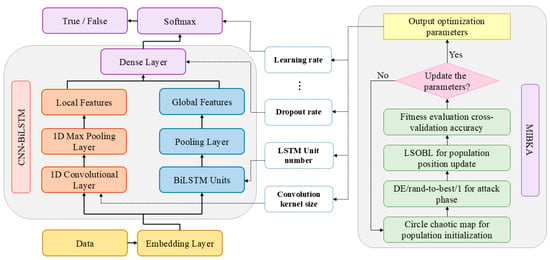
Figure 1
Open AccessArticle
High-Value Patents Recognition with Random Forest and Enhanced Fire Hawk Optimization Algorithm
by
Xiaona Yao, Huijia Li and Sili Wang
Biomimetics 2025, 10(9), 561; https://doi.org/10.3390/biomimetics10090561 - 23 Aug 2025
Abstract
High-value patents are a key indicator of new product development, the emergence of innovative technology, and a source of innovation incentives. Multiple studies have shown that patent value exhibits a significantly skewed distribution, with only about 10% of patents having high value. Identifying
[...] Read more.
High-value patents are a key indicator of new product development, the emergence of innovative technology, and a source of innovation incentives. Multiple studies have shown that patent value exhibits a significantly skewed distribution, with only about 10% of patents having high value. Identifying high-value patents from a large volume of patent data in advance has become a crucial problem that needs to be addressed urgently. However, current machine learning methods often rely on manual hyperparameter tuning, which is time-consuming and prone to suboptimal results. Existing optimization algorithms also suffer from slow convergence and local optima issues, limiting their effectiveness on complex patent datasets. In this paper, machine learning and intelligent optimization algorithms are combined to process and analyze the patent data. The Fire Hawk Optimization Algorithm (FHO) is a novel intelligence algorithm suggested in recent years, inspired by the process in nature where Fire Hawks capture prey by setting fires. This paper firstly proposes the Enhanced Fire Hawk Optimizer (EFHO), which combines four strategies, namely adaptive tent chaotic mapping, hunting prey, adding the inertial weight, and enhanced flee strategy to address the weakness of FHO development. Benchmark tests demonstrate EFHO’s superior convergence speed, accuracy, and robustness across standard optimization benchmarks. As a representative real-world application, EFHO is employed to optimize Random Forest hyperparameters for high-value patent recognition. While other intelligent optimizers could be applied, EFHO effectively overcomes common issues like slow convergence and local optima trapping. Compared to other classification methods, the EFHO-optimized Random Forest achieves superior accuracy and classification stability. This study fills a research gap in effective hyperparameter tuning for patent recognition and demonstrates EFHO’s practical value on real-world patent datasets.
Full article
(This article belongs to the Special Issue Biomimicry for Optimization, Control, and Automation: 3rd Edition)
►▼
Show Figures

Figure 1
Open AccessArticle
Enhanced Whale Optimization Algorithm with Novel Strategies for 3D TSP Problem
by
Yu Zhou and Zijun Hao
Biomimetics 2025, 10(9), 560; https://doi.org/10.3390/biomimetics10090560 - 22 Aug 2025
Abstract
To address the insufficient global search efficiency of the original Whale Optimization Algorithm (WOA), this paper proposes an enhanced variant (ImWOA) integrating three strategies. First, a dynamic cluster center-guided search mechanism based on K-means clustering divides the population into subgroups that conduct targeted
[...] Read more.
To address the insufficient global search efficiency of the original Whale Optimization Algorithm (WOA), this paper proposes an enhanced variant (ImWOA) integrating three strategies. First, a dynamic cluster center-guided search mechanism based on K-means clustering divides the population into subgroups that conduct targeted searches around dynamically updated centroids, with real-time centroid recalculation enabling evolutionary adaptation. This strategy innovatively combines global optima with local centroids, significantly improving global exploration while reducing redundant searches. Second, a dual-modal diversity-driven adaptive mutation mechanism simultaneously evaluates spatial distribution and fitness-value diversity to comprehensively characterize population heterogeneity. It dynamically adjusts mutation probability based on diversity states, enhancing robustness. Finally, a pattern search strategy (GPSPositiveBasis2N algorithm) is embedded as a periodic optimization module, synergizing WOA’s global exploration with GPSPositiveBasis2N’s local precision to boost solution quality and convergence. Evaluated on the CEC2017 benchmark against the original WOA, eight state-of-the-art metaheuristics, and five advanced WOA variants, ImWOA achieves: (1) optimal mean values for 20/29 functions in 30D tests; (2) optimal mean values for 26/29 functions in 100D tests; and (3) first rank in 3D-TSP validation, demonstrating superior capability for complex optimization.
Full article
(This article belongs to the Section Biological Optimisation and Management)
►▼
Show Figures

Figure 1
Open AccessArticle
A Bibliometric Evaluation of the Use of Biomimicry as a Nature-Compatible Design Approach in Landscape Architecture Within the Context of Sustainability and Ecology
by
Rayan Ali and Deryanur Dinçer
Biomimetics 2025, 10(9), 559; https://doi.org/10.3390/biomimetics10090559 - 22 Aug 2025
Abstract
Background: The growing environmental crisis, driven by population increases and rapid urban development, has amplified the need for sustainable and ecological design approaches. Biomimicry, drawing inspiration from nature’s forms, processes, and systems, offers promising solutions in this context. Particularly in landscape architecture, biomimicry
[...] Read more.
Background: The growing environmental crisis, driven by population increases and rapid urban development, has amplified the need for sustainable and ecological design approaches. Biomimicry, drawing inspiration from nature’s forms, processes, and systems, offers promising solutions in this context. Particularly in landscape architecture, biomimicry supports the integration of esthetics with ecological responsibility. Methods: This study presents a bibliometric analysis using the Scopus database to quantitatively assess the relationship between biomimicry and sustainable/ecological design within landscape architecture. A stepwise search strategy was applied, and the Biblioshiny tool within the version 4.2.1 of Bibliometrix package in RStudio 2024.04.1+748 software was used for data analysis and visualization. Results: A total of 1634 documents were identified under the keyword “biomimicry,” among which 210 addressed sustainability and/or ecological design. However, only three studies explicitly connected biomimicry, sustainable/ecological principles, and landscape architecture. Keyword trends, publication years, and country-level contributions were also examined. Conclusions: The findings highlight a substantial gap in the literature on the integration of biomimicry within sustainable landscape architecture. This underscores the need for further interdisciplinary research and practice that incorporates biomimetic principles to promote ecological innovation in landscape design.
Full article
(This article belongs to the Section Development of Biomimetic Methodology)
►▼
Show Figures

Figure 1
Open AccessArticle
Towards Biologically-Inspired Visual SLAM in Dynamic Environments: IPL-SLAM with Instance Segmentation and Point-Line Feature Fusion
by
Jian Liu, Donghao Yao, Na Liu and Ye Yuan
Biomimetics 2025, 10(9), 558; https://doi.org/10.3390/biomimetics10090558 - 22 Aug 2025
Abstract
Simultaneous Localization and Mapping (SLAM) is a fundamental technique in mobile robotics, enabling autonomous navigation and environmental reconstruction. However, dynamic elements in real-world scenes—such as walking pedestrians, moving vehicles, and swinging doors—often degrade SLAM performance by introducing unreliable features that cause localization errors.
[...] Read more.
Simultaneous Localization and Mapping (SLAM) is a fundamental technique in mobile robotics, enabling autonomous navigation and environmental reconstruction. However, dynamic elements in real-world scenes—such as walking pedestrians, moving vehicles, and swinging doors—often degrade SLAM performance by introducing unreliable features that cause localization errors. In this paper, we define dynamic regions as areas in the scene containing moving objects, and dynamic features as the visual features extracted from these regions that may adversely affect localization accuracy. Inspired by biological perception strategies that integrate semantic awareness and geometric cues, we propose Instance-level Point-Line SLAM (IPL-SLAM), a robust visual SLAM framework for dynamic environments. The system employs YOLOv8-based instance segmentation to detect potential dynamic regions and construct semantic priors, while simultaneously extracting point and line features using Oriented FAST (Features from Accelerated Segment Test) and Rotated BRIEF (Binary Robust Independent Elementary Features), collectively known as ORB, and Line Segment Detector (LSD) algorithms. Motion consistency checks and angular deviation analysis are applied to filter dynamic features, and pose optimization is conducted using an adaptive-weight error function. A static semantic point cloud map is further constructed to enhance scene understanding. Experimental results on the TUM RGB-D dataset demonstrate that IPL-SLAM significantly outperforms existing dynamic SLAM systems—including DS-SLAM and ORB-SLAM2—in terms of trajectory accuracy and robustness in complex indoor environments.
Full article
(This article belongs to the Section Biomimetic Design, Constructions and Devices)
►▼
Show Figures
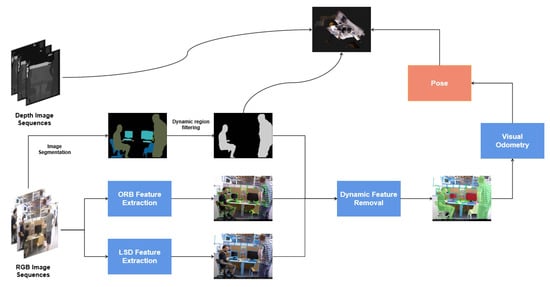
Figure 1
Open AccessArticle
A Multi-Strategy Improved Red-Billed Blue Magpie Optimizer for Global Optimization
by
Mingjun Ye, Xiong Wang, Zihao Guo, Bin Hu and Li Wang
Biomimetics 2025, 10(9), 557; https://doi.org/10.3390/biomimetics10090557 - 22 Aug 2025
Abstract
To enhance the convergence efficiency and solution precision of the Red-billed Blue Magpie Optimizer (RBMO), this study proposes a Multi-Strategy Enhanced Red-billed Blue Magpie Optimizer (MRBMO). The principal methodological innovations encompass three aspects: (1) Development of a novel dynamic boundary constraint handling mechanism
[...] Read more.
To enhance the convergence efficiency and solution precision of the Red-billed Blue Magpie Optimizer (RBMO), this study proposes a Multi-Strategy Enhanced Red-billed Blue Magpie Optimizer (MRBMO). The principal methodological innovations encompass three aspects: (1) Development of a novel dynamic boundary constraint handling mechanism that strengthens algorithmic exploration capabilities through adaptive regression strategy adjustment for boundary-transgressing particles; (2) Incorporation of an elite guidance strategy during the predation phase, establishing a guided search framework that integrates historical individual optimal information while employing a Lévy Flight strategy to modulate search step sizes, thereby achieving effective balance between global exploration and local exploitation capabilities; (3) Comprehensive experimental evaluations conducted on the CEC2017 and CEC2022 benchmark test suites demonstrate that MRBMO significantly outperforms classical enhanced algorithms and exhibits competitive performance against state-of-the-art optimizers across 41 standardized test functions. The practical efficacy of the algorithm is further validated through successful applications to four classical engineering design problems, confirming its robust problem-solving capabilities.
Full article
(This article belongs to the Special Issue Advances in Biological and Bio-Inspired Algorithms)
►▼
Show Figures
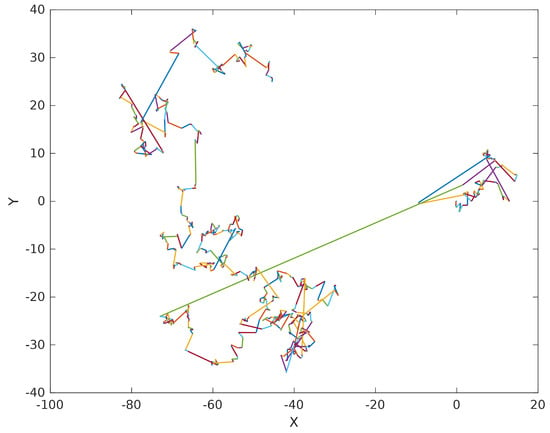
Figure 1
Open AccessArticle
Motion Intention Prediction for Lumbar Exoskeletons Based on Attention-Enhanced sEMG Inference
by
Mingming Wang, Linsen Xu, Zhihuan Wang, Qi Zhu and Tao Wu
Biomimetics 2025, 10(9), 556; https://doi.org/10.3390/biomimetics10090556 - 22 Aug 2025
Abstract
Exoskeleton robots function as augmentation systems that establish mechanical couplings with the human body, substantially enhancing the wearer’s biomechanical capabilities through assistive torques. We introduce a lumbar spine-assisted exoskeleton design based on Variable-Stiffness Pneumatic Artificial Muscles (VSPAM) and develop a dynamic adaptation mechanism
[...] Read more.
Exoskeleton robots function as augmentation systems that establish mechanical couplings with the human body, substantially enhancing the wearer’s biomechanical capabilities through assistive torques. We introduce a lumbar spine-assisted exoskeleton design based on Variable-Stiffness Pneumatic Artificial Muscles (VSPAM) and develop a dynamic adaptation mechanism bridging the pneumatic drive module with human kinematic intent to facilitate human–robot cooperative control. For kinematic intent resolution, we propose a multimodal fusion architecture integrating the VGG16 convolutional network with Long Short-Term Memory (LSTM) networks. By incorporating self-attention mechanisms, we construct a fine-grained relational inference module that leverages multi-head attention weight matrices to capture global spatio-temporal feature dependencies, overcoming local feature constraints inherent in traditional algorithms. We further employ cross-attention mechanisms to achieve deep fusion of visual and kinematic features, establishing aligned intermodal correspondence to mitigate unimodal perception limitations. Experimental validation demonstrates 96.1% ± 1.2% motion classification accuracy, offering a novel technical solution for rehabilitation robotics and industrial assistance.
Full article
(This article belongs to the Special Issue Advanced Service Robots: Exoskeleton Robots 2025)
►▼
Show Figures
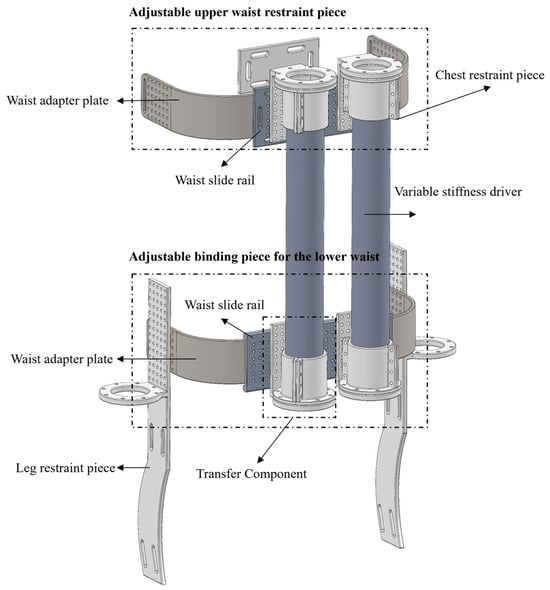
Figure 1
Open AccessArticle
Structure Design and Performance Study of Bionic Electronic Nasal Cavity
by
Pu Chen, Zhipeng Yin, Shun Xu, Pengyu Wang, Lianjun Yang and You Lv
Biomimetics 2025, 10(8), 555; https://doi.org/10.3390/biomimetics10080555 - 21 Aug 2025
Abstract
A miniaturised bionic electronic nose system was developed to solve the problems of expensive equipment and long response time for soil pesticide residue detection. The structure of the bionic electronic nasal cavity is designed based on the spatial structure and olfactory principle of
[...] Read more.
A miniaturised bionic electronic nose system was developed to solve the problems of expensive equipment and long response time for soil pesticide residue detection. The structure of the bionic electronic nasal cavity is designed based on the spatial structure and olfactory principle of the sturgeon nasal cavity. Through experimental study, the structure of the nasal cavity of the sturgeon was extracted and analyzed. The 3D model of the bionic electronic nasal cavity was constructed and verified by Computational Fluid Dynamics (CFD) simulation. The results show that the gas flow distribution in the bionic chamber is more uniform than that in the ordinary chamber. The airflow velocity near the sensor in the bionic chamber is lower than in the ordinary chamber. The eddy current intensity near the bionic chamber sensor is 2.29 times that of the ordinary chamber, further increasing the contact intensity between odor molecules and the sensor surface and shortening the response time. The 10-fold cross-validation method of K-Nearest Neighbor (K-NN), Random Forest (RF) and Support Vector Machine (SVM) was used to compare the recognition performance of the bionic electronic nasal cavity with that of the ordinary electronic nasal cavity. The results showed that, when the bionic electronic nose detection system identified the concentration of pesticide residues in soil, the recognition rate of the above three recognition algorithms reached 97.3%, significantly higher than that of the comparison chamber. The bionic chamber electronic nose system can improve the detection performance of electronic noses and has a good application prospect in soil pesticide residue detection.
Full article
(This article belongs to the Special Issue Biomimetics in Intelligent Sensor: 2nd Edition)
►▼
Show Figures
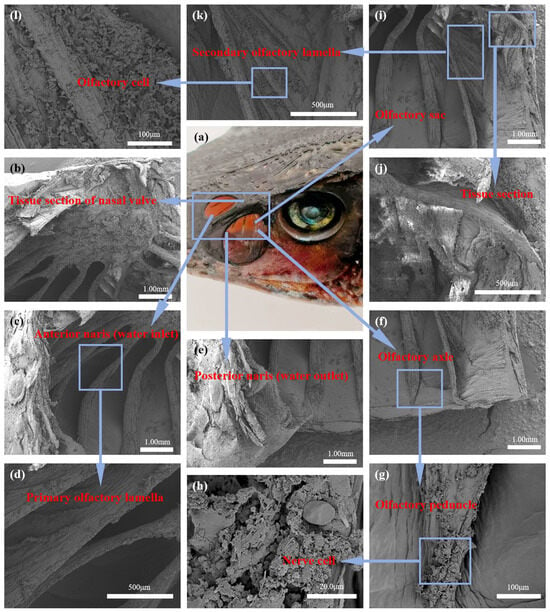
Figure 1
Highly Accessed Articles
Latest Books
E-Mail Alert
News
Topics
Topic in
ASI, Bioengineering, C, Healthcare, Biomimetics, Processes
Biomedical Engineering, Healthcare and Sustainability, 2nd Edition
Topic Editors: Teen-Hang Meen, Chun-Yen Chang, Charles Tijus, Po-Lei Lee, Yi-Chun DuDeadline: 31 May 2026
Topic in
Biomimetics, Electronics, Gels, Robotics, Technologies
Bio-Inspired, Biomedical, Surgical, Social and AI-Integrated Bio-Mechanical Robotics
Topic Editors: Yanen Wang, Chenguang YangDeadline: 31 July 2026
Topic in
Molecules, Biomimetics, Chemosensors, Life, AI, Sci
Recent Advances in Chemical Artificial Intelligence
Topic Editors: Pier Luigi Gentili, Jerzy Górecki, David C Magri, Pasquale StanoDeadline: 15 October 2026

Conferences
Special Issues
Special Issue in
Biomimetics
Bionic Wearable Robotics and Intelligent Assistive Technologies
Guest Editor: Junlong GuoDeadline: 31 August 2025
Special Issue in
Biomimetics
Laser Photonics and Micro/Nano Fabrication: Towards Innovations in Biomimetic Surface Engineering
Guest Editors: Lei Wang, Fan ZhangDeadline: 31 August 2025
Special Issue in
Biomimetics
Computational Biology Simulation, Agent-Based Modelling and AI
Guest Editor: Neil VaughanDeadline: 31 August 2025
Special Issue in
Biomimetics
Bioinspired Energy Harvesting and Self-Powered Systems: Innovations and Applications
Guest Editor: Trilochan BhattaDeadline: 31 August 2025







